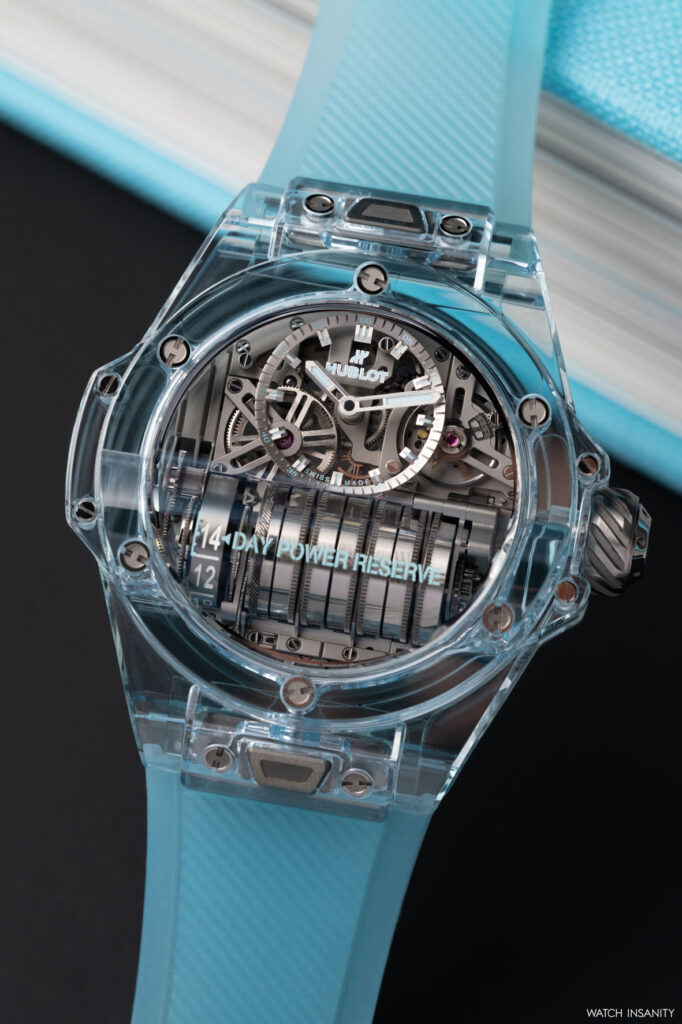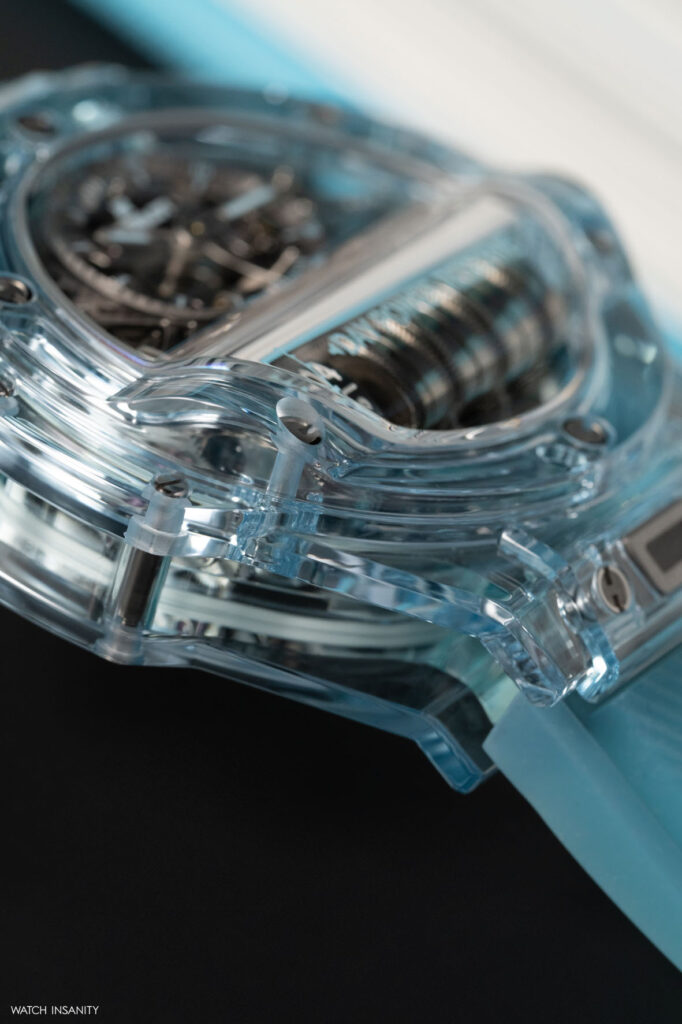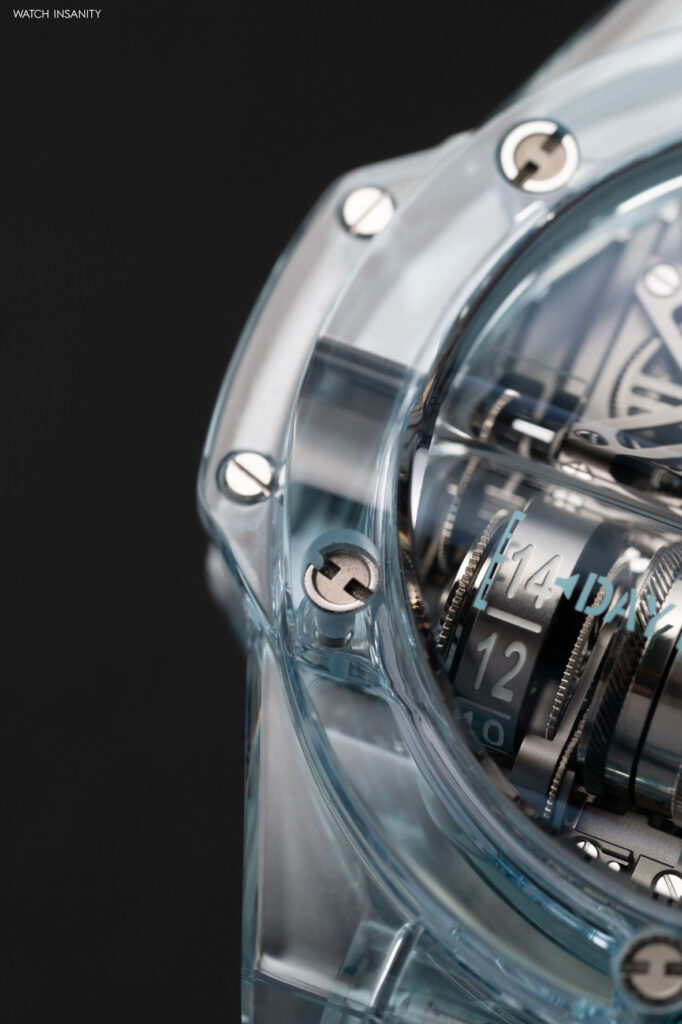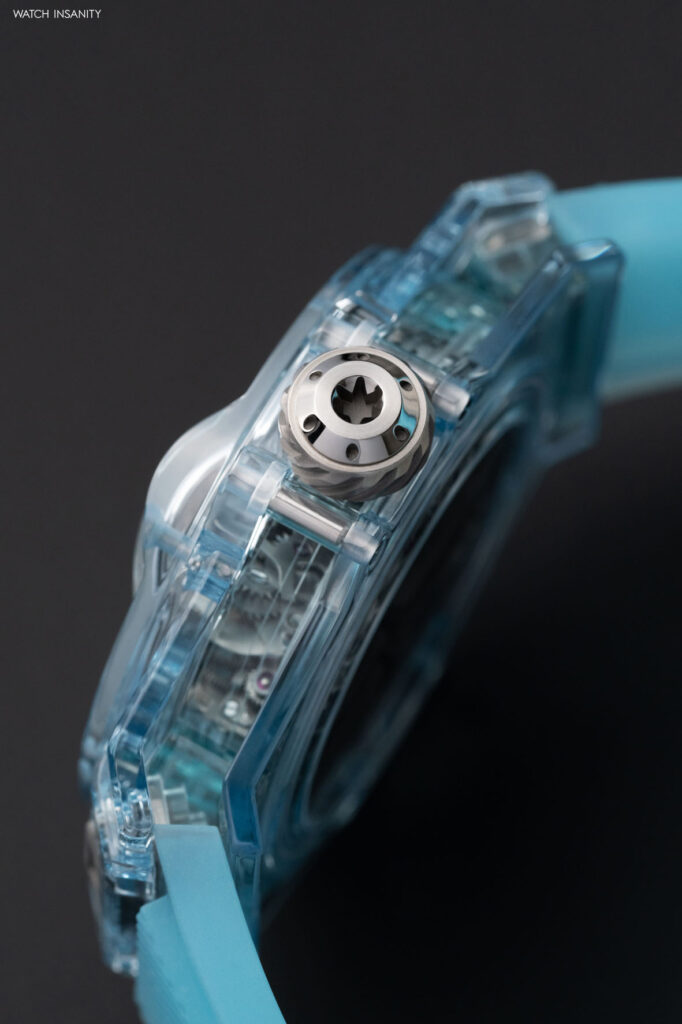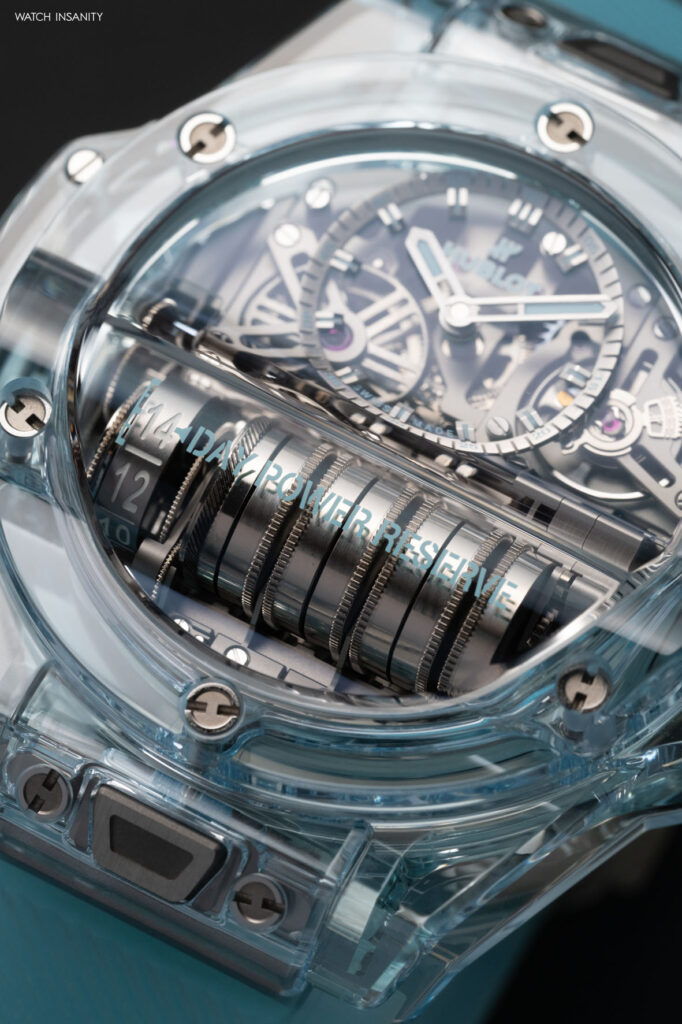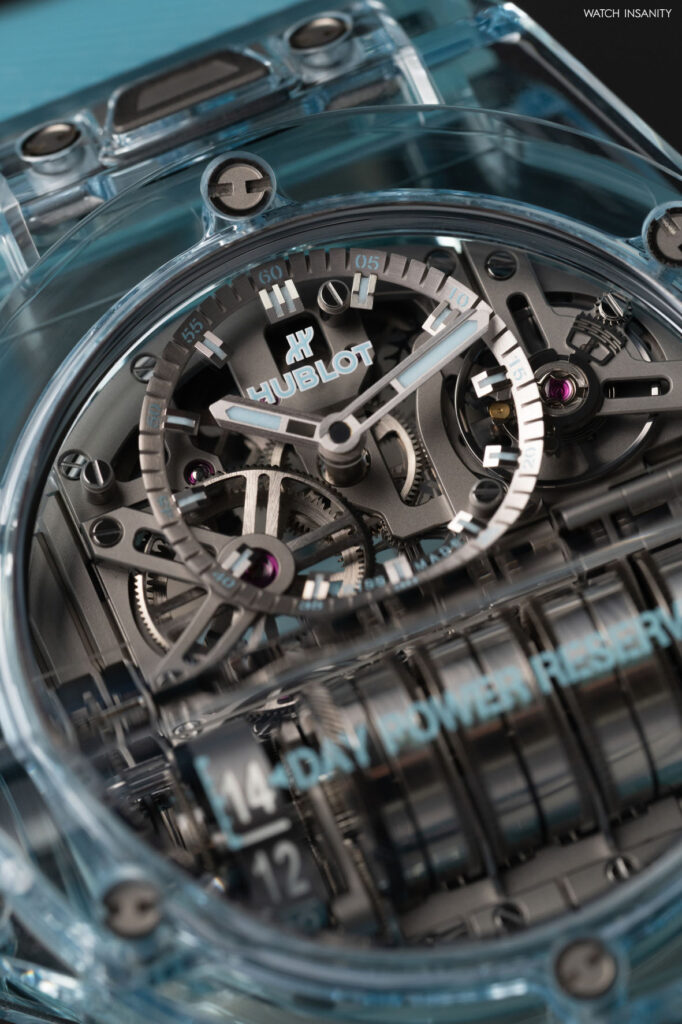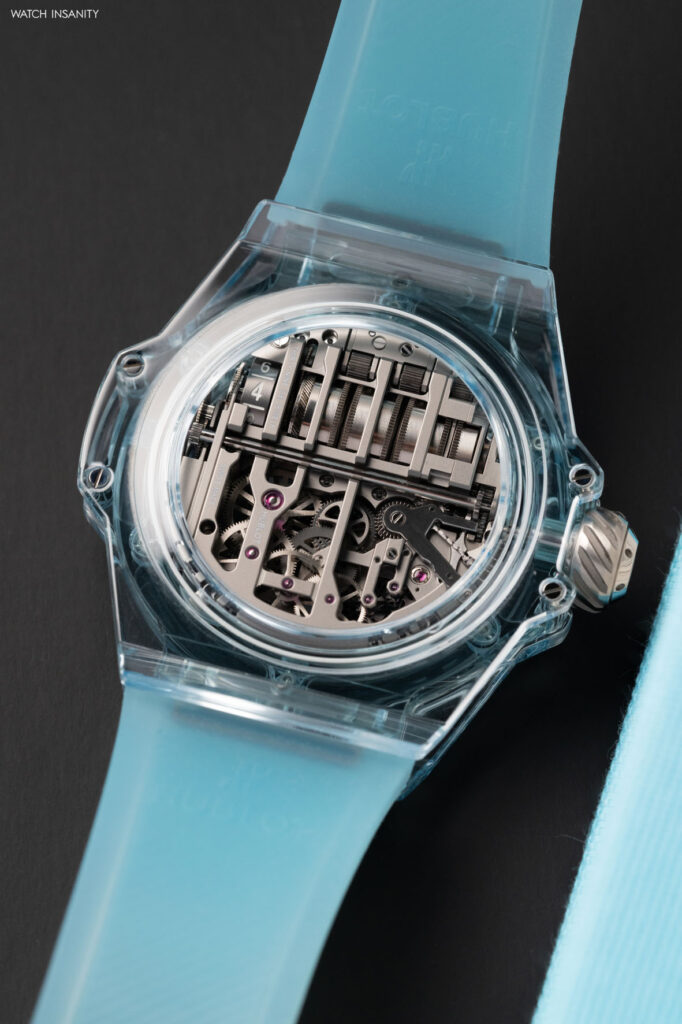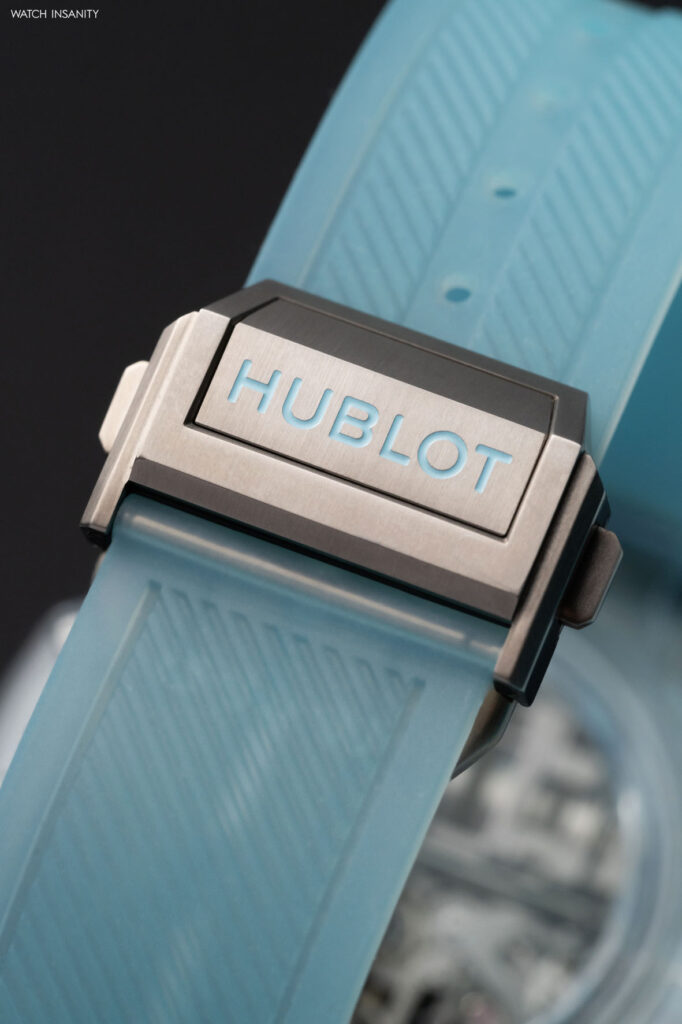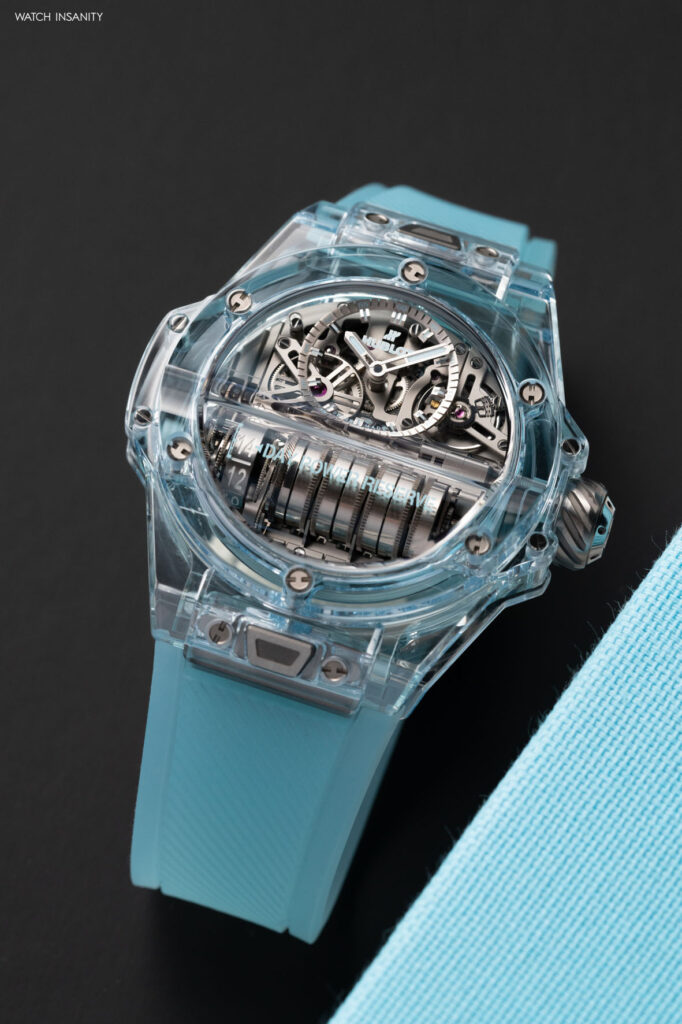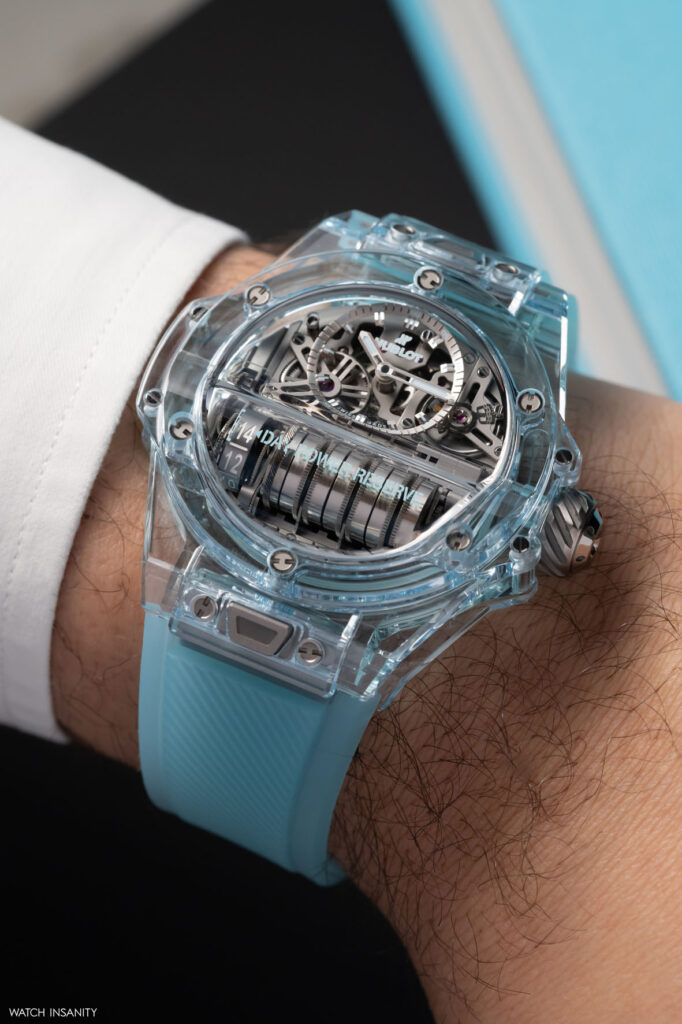Big Bang MP-11 Water Blue Sapphire: a fresh touch by Hublot
25 September 2024Today we get back to writing again about an old Hublot acquaintance, the MP collection. We recently had the opportunity to take a closer look at the MP-10 Tourbillon Weight Energy System Titanium, with its space-age design. Shortly before that, it was theturn of the MP-13 Tourbillon Bi-Axis Retrograde and, before that, the Big Bang MP-11 Saxem. It is precisely to the MP-11 collection that the protagonist of this article belongs: the Big Bang MP-11 14-Day Power Reserve Water Blue Sapphire. A piece that offers all of Hublot’s savoir faire in terms of movement and materials, declined in the MP-11 line – probably the most visionary along with the MP-13.
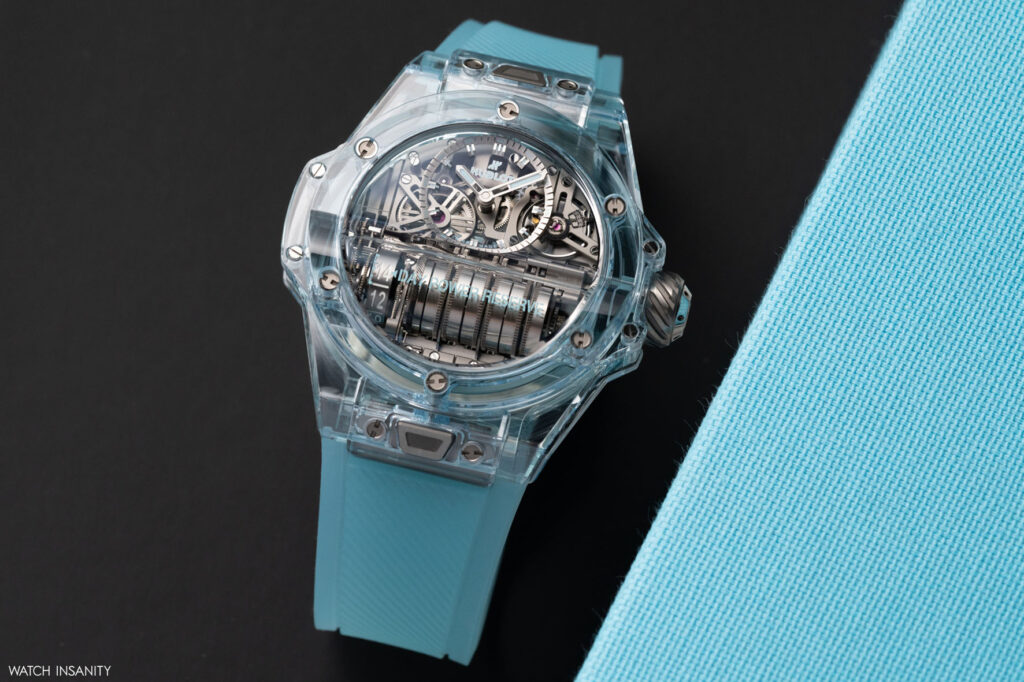
HUBLOT’S NEW BIG BANG MP-11 BLUE
This collection represents one of the two poles within which Hublot’s portfolio ranges, offering watches with a dual soul thanks to its vertically integrated production. On the one hand, the brand’s entry-level offerings, timepieces equipped with inexpensive mass-produced movements. On the other hand, the high-end products, in which Hublot’s skill in producing calibres and using materials is reflected. The brand develops and produces complex movements in-house, with unique complications and unprecedented constructions, usually presented in cases made from never-before-seen materials with unique aesthetics and properties.
The Big Bang MP-11 14-Day Power Reserve Water Blue Sapphire is exactly one such watch. It is distinguished by its case design, which is the classic one from the collection that saw the light at Baselworld 2018. The 45-mm-diameter by 14.4-mm-thick case is, in this case, made of synthetic sapphire in an ‘aqua blue’ colour, a shade of blue that suits today’s fashion tastes. It is hand-finished, resulting in perfectly smooth and transparent workmanship. In typical Big Bang style, the case is sandwich-built with front and back plates in sapphire, containing a case middle made of sapphire as well.
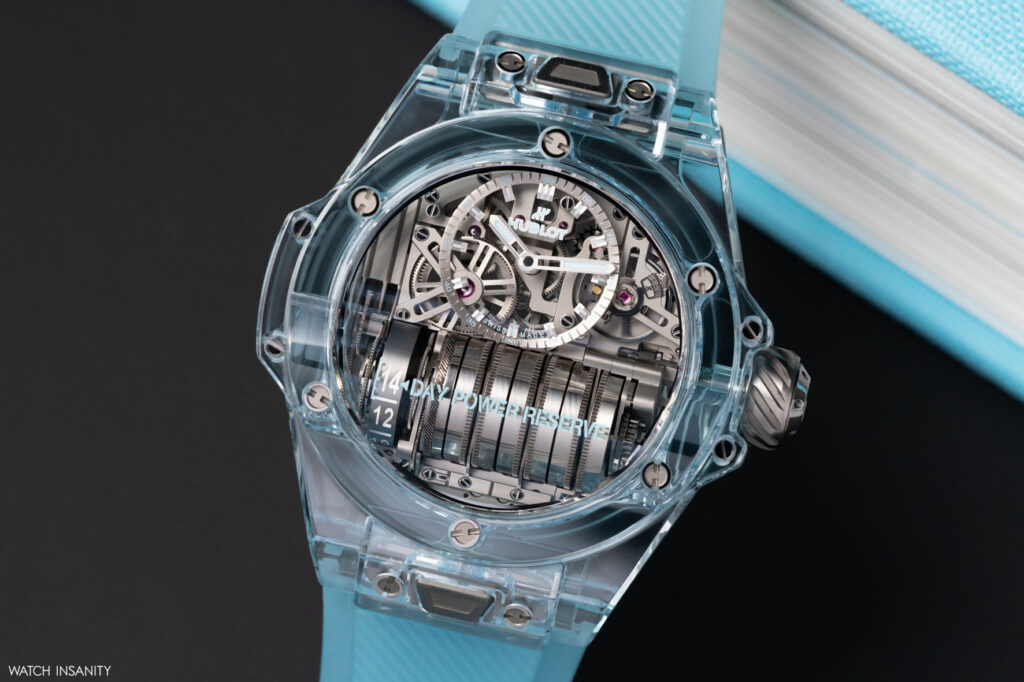
Although obtained in Hublot’s laboratories using a new chemical formula, blue sapphire retains the material’s usual characteristics, including its extreme transparency and surface hardness, which makes it virtually unscratchable. As with ceramics, the Nyon watchmaker has a unique expertise among top-of-the-range brands when it comes to making sapphire cases. In the past and up to now, it has experimented with shades ranging from pink to blue, orange to yellow to violet.
The new Water Blue shade is the result of an unprecedented chemical formula, a customised development that has resulted in an exclusive transparency index obtained by Hublot’s laboratories. A transparency that retains all the classic properties of sapphire: brilliance, luminosity, almost total resistance to shocks and scratches, inalterability over time. This last aspect of the Big Bang MP-11 14-Day Power Reserve Water Blue Sapphire has been given special attention. Thanks to prolonged tests and a development period lasting several years, accelerated ageing of the material has been simulated, even to guarantee the case’s constant water-resistance (30 bar), with almost perfect results.
TWO WEEKS OF AUTONOMY: THE HUBLOT HUB9011 CALIBRE
The dial of the watch is a classic from the MP-11 collection, with the hour indication entrusted to a counter at 12 o’clock and the lower half visually occupied by the seven horizontally arranged cylindrical barrels. As these are above the calibre plane, the sapphire crystal protecting the dial is partially domed to highlight them. At eight o’clock, at the end of the barrel stack, is the power reserve indicator in the form of a wheel, which makes one revolution every fortnight. For that is the autonomy of the Big Bang MP-11 14-Day Power Reserve Water Blue Sapphire: 14 days or, for those who go for the wow factor, 336 hours.
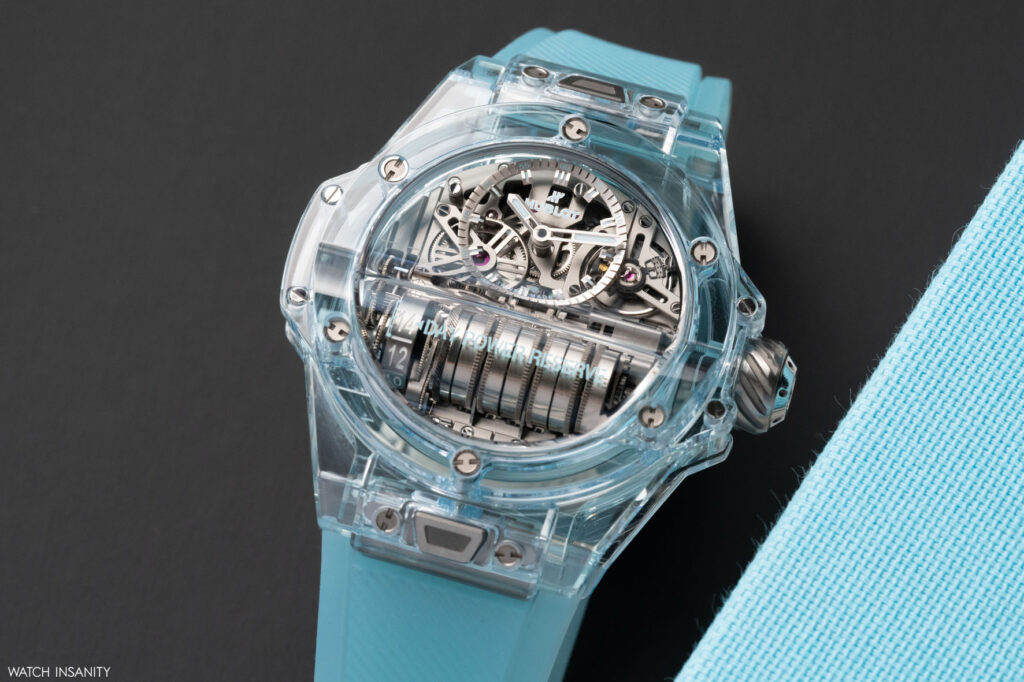
The calibre animating the watch is the HUB9011, an in-house mechanical movement made by Hublot. It is a hand-wound skeleton movement whose architecture integrates seven barrels coupled in series. Hublot managed to achieve this by employing an original movement architecture that integrates the barrels within a thickness of only 10.92 mm. To allow the transmission of energy between the horizontal axis of the barrels and the vertical mechanisms governing display of the hours and minutes, the designers adopted a system uncommon in watchmaking: a 90-degree transmission via a helical-toothed worm gear wheel visible between 9 and 10 o’clock.
The technical solution, however, also required a good aesthetic balance in relation to this helical wheel, so the balance wheel was moved to the side of the dial, in a symmetrical position at 2 o’clock. The Hublot HUB9011 calibre, comprising 270 parts, works at 28,800 vibrations per hour and is distinguished, among other things, by its patented indexing system and silicon escapement. The Big Bang MP-11 14-Day Power Reserve Water Blue Sapphire can be wound manually by turning the fluted crown – which is generously sized and has a worm gear relief – or an electric Torx stylus.
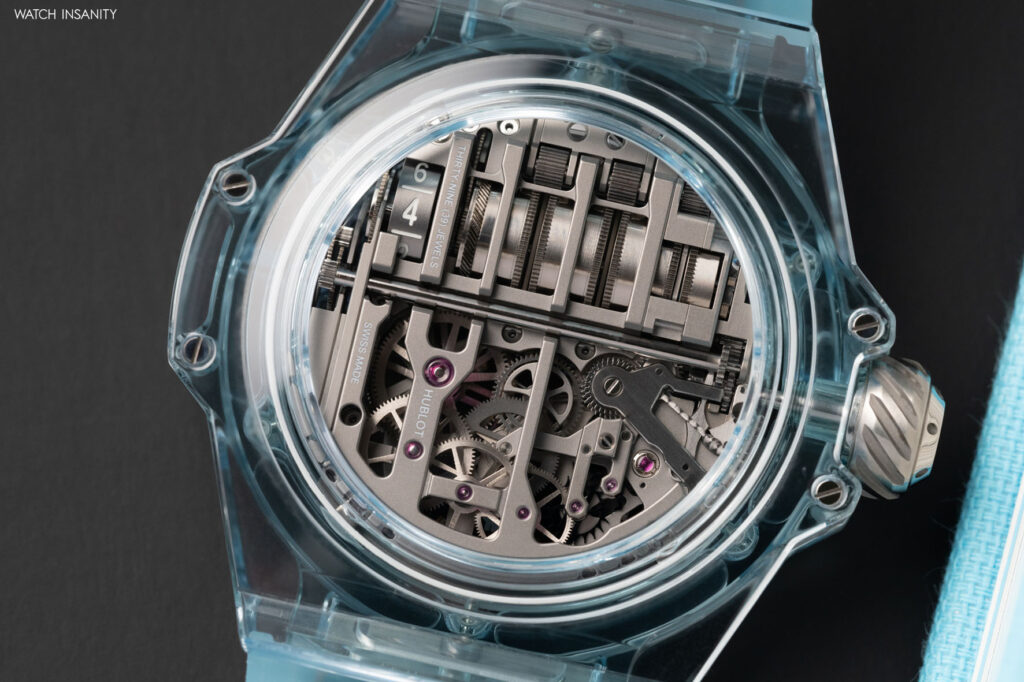
A NICHE WATCH
The Big Bang MP-11 14-Day Power Reserve Water Blue Sapphire is completed by the classic Hublot strap in structured, lined, transparent rubber, also in Water Blue to match the case’s sapphire colour. This is a non-trivial detail, because working the rubber in such a way that it takes on the same colour as the case requires expertise, experimentation and technology that few, apart from Hublot, have.
As is standard for watches from the Nyon-based brand, this one also features the ‘One Click’ system for quick release of the strap, which is closed by a titanium folding clasp bearing the Hublot inscription in Water Blue.
Priced at 178,000 euros, the Big Bang MP-11 14-Day Power Reserve Water Blue Sapphire is competitive in its specific niche, also occupied by brands such as Richard Mille and Roger Dubuis. Two brands that in terms of research into complications and materials are on a par with Hublot. The fact that this timepiece belongs to the brand’s high-end collections justifies the figure, which is certainly not within everyone’s reach; however, considering the movement and the case’s material, the price is more than fair, and promises to annoy the competition.
By Davide Passoni

